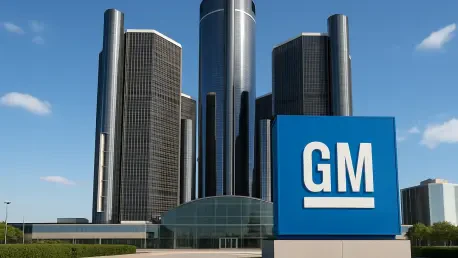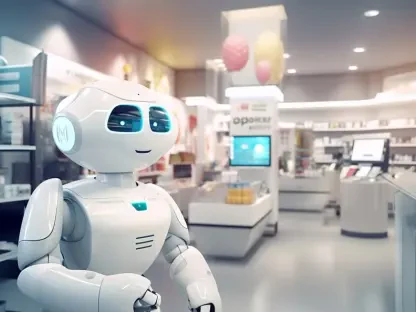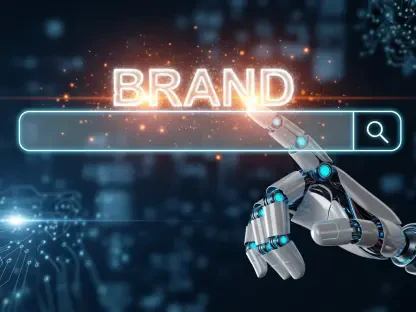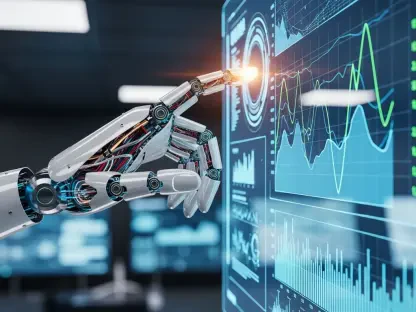In a recent visit to JDM Collision, a GM-certified facility in Thornton, IL, the I-CAR Principal Business Development Team gained an up-close perspective on the transformative advancements shaping collision repair for modern vehicles, offering a deep dive into industry evolution. Hosted by the shop’s owner, John Melendez, this immersive tour went beyond surface-level observation, delving into the practical application of state-of-the-art technologies and training methods. With a sharp focus on electric vehicles (EVs), Advanced Driver Assistance Systems (ADAS), and high-performance models such as the C8 Corvette, the experience illuminated how the industry is racing to keep pace with rapid technological evolution. Far from a routine outing, this exploration offered a glimpse into the sophisticated strategies repair shops must adopt to ensure safety, precision, and compliance with manufacturer standards in an increasingly complex field.
Advanced Technologies in Collision Repair
Precision Tools and Robotic Systems
The integration of I-CAR Gold Class training with Original Equipment Manufacturer (OEM) standards emerged as a cornerstone of modern collision repair during the visit to JDM Collision. This synergy equips technicians with the knowledge to navigate the intricacies of today’s vehicles while adhering to factory specifications. A standout demonstration involved the use of robotic curing systems in the paint center, where programmable arms expedite the curing process for panels with remarkable energy efficiency. Such technology proves especially vital for EV platforms, where thermal management during refinishing must align with strict OEM guidelines. By reducing cycle times without sacrificing quality, these systems exemplify how innovation can streamline operations while maintaining the high standards demanded by manufacturers, ensuring that repaired vehicles perform as intended on the road.
Another highlight was the structural repair facility, where precision tools took center stage in addressing complex damage. A live rail replacement on a C8 Corvette, conducted using a Celette fixture bench with OEM-specific fixtures, showcased the meticulous alignment required to meet factory tolerances. Tools like 3D CAD measuring systems and programmable resistance spot welding further demonstrated the shop’s dedication to advanced joining techniques. These methods, paired with direct access to GM OEM diagnostics, ensure repairs are executed with unyielding accuracy. Additionally, wheel and tire diagnostics using laser-accurate balancing machines revealed hidden issues, such as flat spots from sideways impacts, that could compromise safety if undetected. This emphasis on precision underscores the critical role of specialized equipment in modern repair processes.
EV and ADAS Innovations
A significant portion of the tour focused on the evolving demands of EV infrastructure and ADAS calibration, reflecting the industry’s shift toward future-ready solutions. A GM BrightDrop EV delivery van served as a practical example, with technicians accessing OEM procedures in real time to obtain structural and calibration guidance directly from the manufacturer. This direct link ensures that repairs align with the latest standards, a necessity for commercial and electric platforms. Moreover, a dedicated EV repair stall equipped with Level 2 charging capabilities and high-voltage safety protocols highlighted the shop’s preparedness for the unique challenges posed by electric vehicles. Such infrastructure is no longer optional but essential as the prevalence of EVs continues to grow, pushing repair facilities to adapt swiftly to new safety and operational requirements.
Beyond EVs, the integration of ADAS calibration with pre-alignment checks was a key focus, ensuring that critical systems like cameras, radars, and steering mechanisms function seamlessly after repairs. The process involves meticulous adjustments to guarantee that safety features operate as designed, a non-negotiable aspect of modern vehicle repair. The shop’s ability to handle these calibrations in-house, rather than relying on external providers, further strengthens repair consistency and compliance with OEM expectations. This approach not only enhances efficiency but also minimizes the risk of errors that could arise from fragmented repair processes. As vehicles become increasingly dependent on advanced safety systems, the ability to perform precise calibrations becomes a defining factor in delivering reliable and safe repairs to customers.
Industry Challenges and Opportunities
Balancing Self-Sufficiency and Collaboration
One of the broader trends observed during the visit was the push toward self-sufficiency in collision repair, a strategy vividly embodied by JDM Collision’s operations. By incorporating in-house services such as tire diagnostics, ADAS calibration systems, and dealer valet programs, the shop maintains greater control over the repair process. This reduces dependence on external vendors, a move that aligns with OEM integrity and minimizes the potential for deviations from manufacturer guidelines. Such an approach is gaining traction across the industry as certified facilities recognize the value of overseeing every aspect of a repair. The result is a streamlined workflow that prioritizes quality and accountability, setting a benchmark for how shops can achieve consistency in an era of increasingly sophisticated vehicle technologies.
Collaboration also emerged as a vital lifeline, particularly when addressing complex tasks beyond the scope of standard repair processes. For instance, partnering with OEM-certified technicians for specialized work, such as drivetrain removals on high-performance vehicles, ensures that even the most intricate repairs meet factory standards. This balance between independence and strategic partnerships offers a practical model for shops aiming to expand their capabilities without overextending resources. The visit highlighted how leveraging these collaborative efforts, alongside continuous training, can bridge gaps in expertise and equipment access. As the industry evolves, finding harmony between self-reliance and external support will likely define the success of repair facilities navigating the complexities of modern vehicles.
Navigating Barriers for Smaller Operators
The challenges facing single-shop operators were a poignant topic during a candid Q&A session at JDM Collision, revealing the stark disparities within the collision repair landscape. Many smaller facilities struggle to compete due to limited access to cutting-edge equipment, comprehensive training programs like those offered by I-CAR, and direct OEM support. Without these resources, keeping pace with technological advancements and manufacturer expectations becomes an uphill battle. This gap not only affects their ability to handle advanced repairs but also impacts overall customer trust and business viability. The discussion underscored the urgent need for accessible solutions that can level the playing field, ensuring that even smaller players can deliver high-quality repairs in a rapidly changing industry.
Despite these hurdles, opportunities for growth and adaptation were also evident, offering a glimmer of hope for smaller operators. Embracing collaborative models, such as working with OEM-certified technicians or tapping into I-CAR resources, presents a viable path forward. These strategies can help bridge the gap in expertise and technology, enabling shops to enhance their capabilities without prohibitive investments. The success of facilities like JDM Collision serves as a testament to the value of strategic planning and commitment to education. Reflecting on the insights from this visit, actionable steps—investing in training, fostering partnerships, and prioritizing incremental upgrades—emerged as ways smaller shops could overcome barriers. These efforts, though challenging, pave the way for a more inclusive and innovative future in collision repair.









